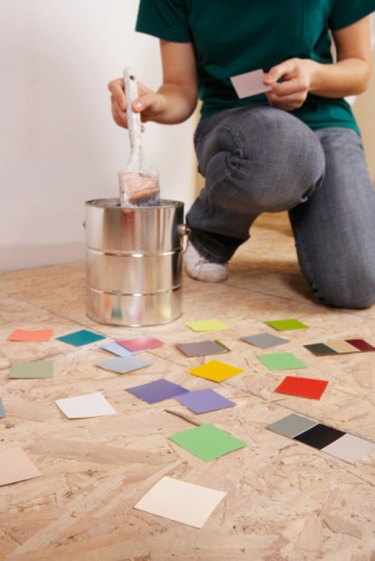
Acrylic paints were initially developed for house painting, but artists also use them when painting on canvas. They are water-based, so you can thin them out with water rather than using mineral spirits. Many artists and house painters use acrylics, and there are advantages and disadvantages with these types of paints that you need to be aware of.
Drying Time
Video of the Day
Acrylic paints dry very rapidly compared to other types of paint. If you are a commercial house painter, this is important because you do not have to wait long to put on additional coats. If you are an artist, this is important because paintings will be dry enough to ship safely within 24 hours without concern that the paint will smear.
Video of the Day
Durability
Acrylic paints are known to be more flexible than other types of paints. This means that as the canvas or siding expands and contracts due to temperature changes, the paint will stretch and compress rather than crack.
Toxins
Acrylic paints contain some toxins in the pigment. These toxins can be released during the painting process as fumes which can irritate people's eyes and breathing, or even give you a headache. Additionally, these toxins cannot be washed away into a sink drain like other water-based paints as they can be harmful to the environment.
Working time
Acrylic paints dry very quickly on an artist's palate. For painters who work slowly this can be a problem because they would need to constantly replenish the paint on the palate, and there is short window in which the painter can manipulate the material once it is painted onto the canvas. Additionally, the fast drying time can be challenging when trying to mix paints together.